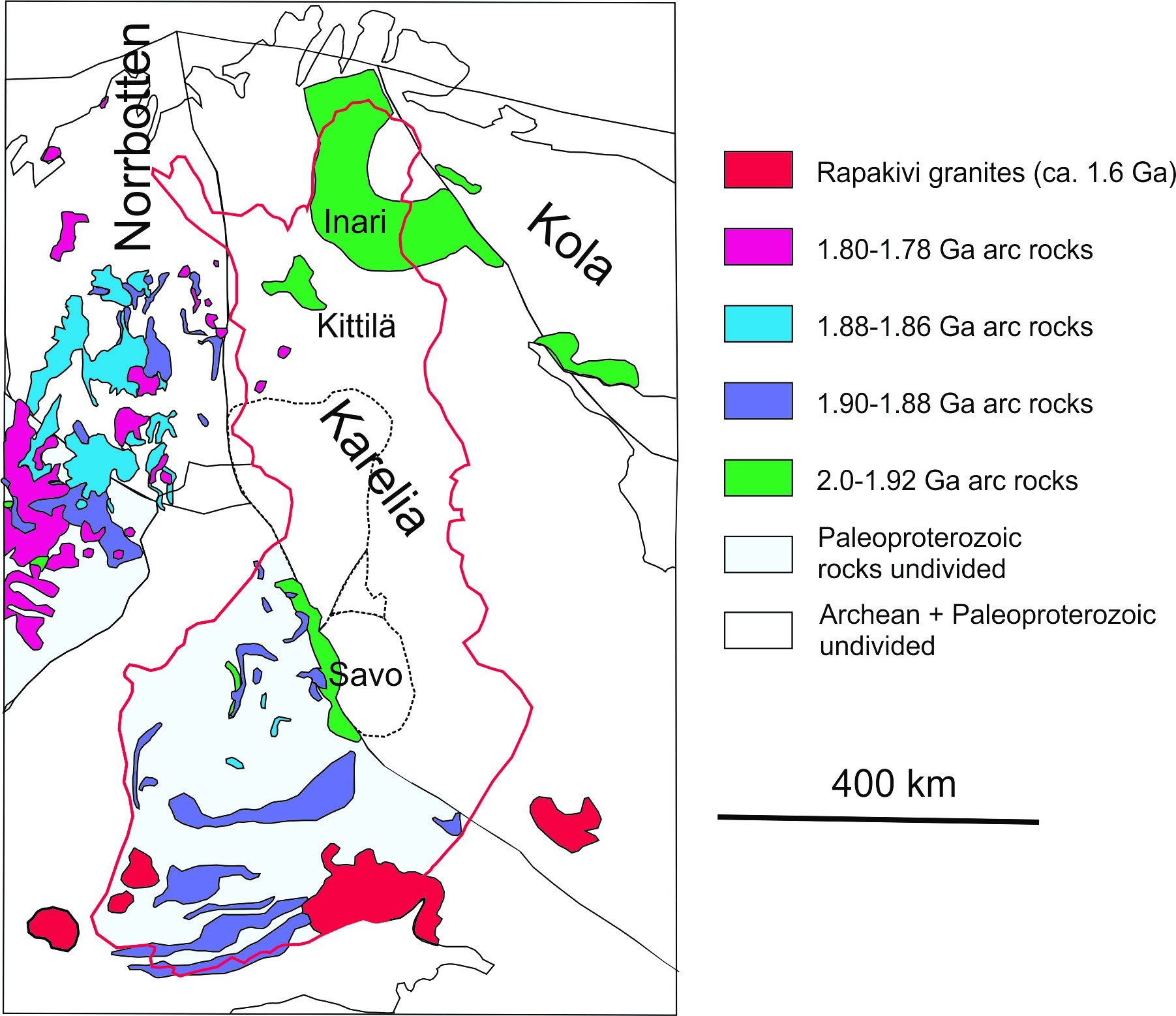After final continental break-up at 2.05 Ga the development of an oceanic island arc started to form at ≥2.02 Ga as evidenced by the oceanic island arc rocks of the Kittilä suite in the northern Finland. Arc magmatism continued until 1.88 Ga in Finland (Fig. 1) and continued outboard in west and southwest until ca. 1.8 Ga.
The main Paleoproterozoic orogenic evolution of Fennoscandia (Fig. 2) has been divided into the Lapland-Kola orogeny (1.94–1.86 Ga) and the composite Svecofennian orogeny (1.92–1.79 Ga). The latter is further divided into the Lapland-Savo, Fennian, Svecobaltic and Nordic orogenies. Several orthogonal tectonic events (orogenies) in Finland indicate amalgamation of crustal blocks around Archean Karelia continent core at 1.92-1.77 Ga. Fennoscandia was then integrated as a key component in the Columbia/Hudsonia/Nuna supercontinent.
The equidimensional Fennian orogen in the central part of the Svecofennian orogen has recently been modeled to have formed by the buckling of a linear orogen about vertical axes of rotation into coupled Bothnian oroclines (Fig. 2). Orogen-parallel NNW-SSE shortening at 1.87-1.85 Ga buckled the hot linear orogens about vertical axes of rotation into oroclines, and some gold deposits might have formed during buckling. Renewed NNW-SSE shortening at 1.84–1.81 Ga and following NE-SW shortening at 1.79–1.76 Ga formed new stages of orogenic gold deposits and metamorphosed earlier orogenic gold deposits.

